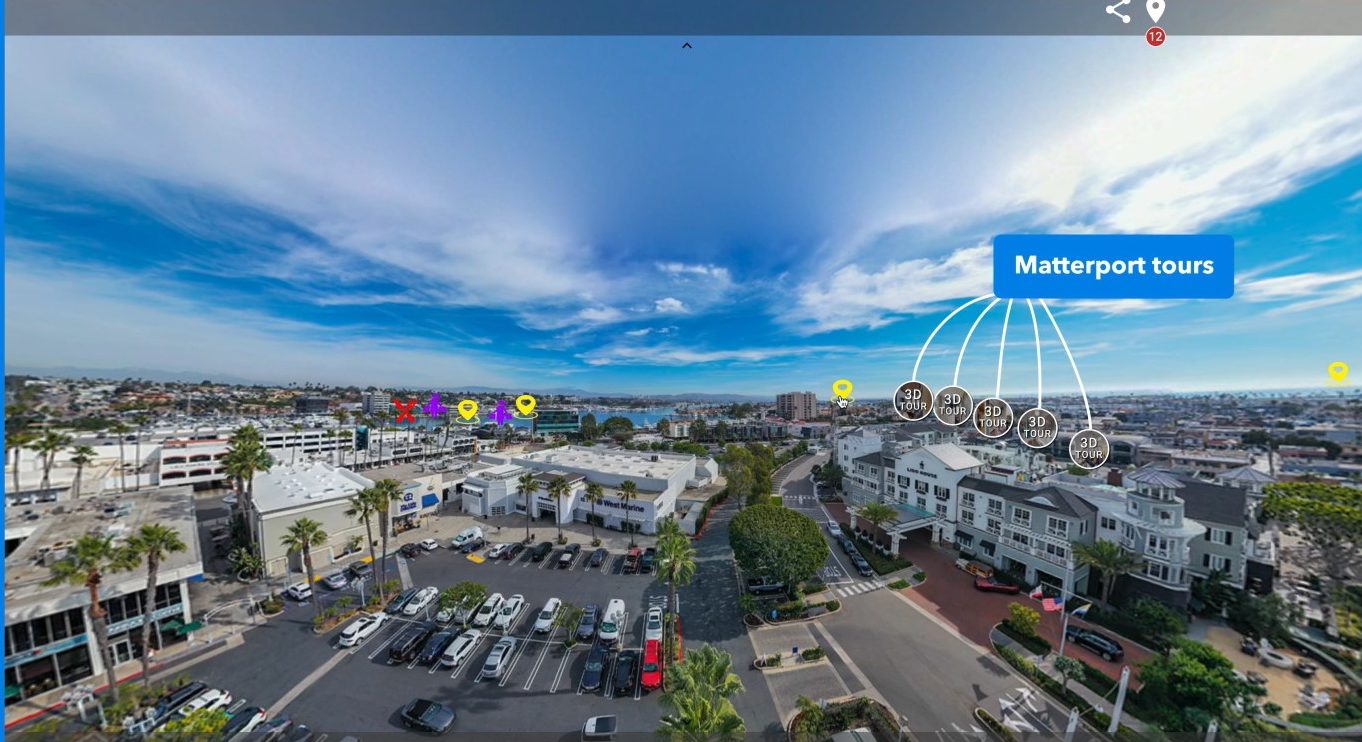virtual tour pricing
Virtual Tour Pricing: A Comprehensive Guide for Photographers and Real Estate Agents
Virtual tours have transformed industries like real estate, hospitality, and education by offering immersive, interactive experiences. But how much does it cost to create one? Prices vary based on factors like complexity, technology, and industry needs.
In this guide, we’ll break down virtual tour pricing, explore different pricing models, and highlight additional costs. Whether you’re a photographer offering virtual tour services or a real estate agent investing in 360-degree tours, this article will help you understand costs and value.
Start creating virtual tours with Threesixty.tours today!
I. Introduction
What Are Virtual Tours?
A virtual tour is a digital simulation of a real-world location, allowing users to explore spaces interactively. These tours use 360-degree photography, panoramic images, or 3D rendering to create an immersive experience.
Why Are Virtual Tours Important?
Virtual tours are essential in many industries:
- Real Estate: Homebuyers can explore properties remotely, saving time and effort.
- Hospitality & Tourism: Hotels and resorts use virtual tours to attract guests.
- Education: Schools and universities showcase campuses to prospective students.
- Healthcare: Hospitals and clinics provide virtual facility tours for patients and visitors.
Understanding Virtual Tour Pricing
The cost of creating a virtual tour depends on factors like project complexity, technology, and customization. Pricing models vary, from flat fees to subscription services.
In this guide, we’ll explore how virtual tour pricing works and key factors to consider.
Try Threesixty.tours for affordable virtual tour solutions!
II. Factors Influencing Virtual Tour Pricing
1. Complexity of the Virtual Tour
Virtual tours range from simple 360-degree photo tours to advanced 3D walkthroughs. Complexity affects pricing:
- 2D Virtual Tours: Basic tours using stitched panoramic images. More affordable but lack depth.
- 3D Virtual Tours: Created with specialized cameras like Matterport or LiDAR technology. More immersive but costlier.
2. Length and Detail of the Tour
The number of scenes, points of interest, and interactive elements impact pricing. A small apartment tour costs less than a commercial property tour with multiple floors and rooms.
3. Technology Used
High-quality cameras, drones, and advanced editing software increase costs but improve the final product.
4. Customization Options
Adding branding, interactive hotspots, voiceovers, and custom navigation increases the price. Businesses often pay extra for white-label solutions.
By understanding these factors, photographers and real estate agents can estimate costs and choose the right solutions.
III. Pricing Models for Virtual Tours
1. Flat Fee Pricing
Some virtual tour providers charge a one-time flat fee. This model is ideal for businesses needing a single project without ongoing costs.
2. Hourly Rates vs. Project-Based Pricing
- Hourly Rates: Some photographers charge by the hour, which works for smaller projects.
- Project-Based Pricing: Larger projects often have fixed pricing based on scope, ensuring cost predictability.
3. Subscription Models for Ongoing Services
Many SaaS platforms, like Threesixty.tours, offer subscription-based pricing for hosting and managing virtual tours. This is great for real estate agents and photographers who need continuous access.
4. Tiered Pricing Based on Features
Providers often offer different pricing tiers:
- Basic: Standard 360-degree images with minimal interactivity.
- Standard: Includes branding, hotspots, and analytics.
- Premium: Advanced customization, 3D mapping, and high-end technology.
Understanding these models helps businesses choose the best option for their budget.
IV. Comparison of Virtual Tour Pricing Across Industries
1. Real Estate
Real estate agents typically pay $150 to $500 per tour, depending on property size and features. High-end properties may require 3D Matterport tours, which cost more.
2. Hospitality & Tourism
Hotels and resorts invest in high-quality virtual tours to attract guests. Pricing varies based on project scale, ranging from $500 to $5,000 for premium interactive tours.
3. Education
Virtual tours for schools and universities range from $1,000 to $10,000, depending on detail and interactivity. Institutions use these tours to showcase campuses to prospective students.
4. Healthcare
Hospitals and medical facilities use virtual tours to guide patients and visitors. Pricing is similar to real estate and education, with costs ranging from $500 to $5,000, depending on complexity.
Each industry has unique pricing structures, making it essential to choose the right provider.
V. Additional Costs and Considerations
1. Equipment and Software Expenses
Photographers and businesses investing in virtual tour creation need high-quality cameras, tripods, and editing software. Costs can range from $500 to $5,000, depending on the equipment.
2. Post-Production Editing and Enhancements
Editing, stitching, and adding interactive elements require time and expertise. Professional editing services may cost $50 to $200 per tour, depending on complexity.
3. Marketing and Promotional Costs
To maximize impact, businesses invest in digital marketing, SEO, and social media promotion. These costs vary based on strategy.
4. Ongoing Maintenance and Updates
Virtual tours may require updates to reflect property or business changes. Subscription-based platforms like Threesixty.tours offer hosting and maintenance services to ensure long-term usability.
By considering these additional costs, businesses can budget effectively and maximize value.
VI. Expanding Your Virtual Tour Business
1. How to Price Your Virtual Tour Services
If you’re a photographer or virtual tour creator, setting the right price is crucial. Consider:
- Your Skill Level: More experience justifies higher rates.
- Market Demand: Research competitors in your area.
- Project Scope: Larger, more complex tours should cost more.
2. How to Attract More Clients
- Offer Competitive Pricing: Provide tiered pricing to appeal to different budgets.
- Market Your Services: Use SEO, social media, and email marketing.
- Showcase Your Work: Create a portfolio with high-quality examples.
3. Future Trends in Virtual Tours
- AI-Powered Tours: AI-driven automation will streamline creation.
- VR Integration: Virtual reality headsets will enhance immersion.
- Increased Demand: More industries will adopt virtual tours for marketing and training.
Staying ahead of these trends can help you grow your business.
VII. Conclusion
Recap of Pricing Factors and Models
Virtual tour pricing depends on complexity, technology, customization, and industry needs. Pricing models range from flat fees to subscriptions.
Aligning Pricing with Value
Investing in a high-quality virtual tour can enhance marketing efforts and customer engagement. Businesses should balance cost with the value and ROI that virtual tours provide.
Final Thoughts
For photographers and real estate agents, choosing the right virtual tour provider is crucial. Platforms like Threesixty.tours offer cost-effective SaaS solutions for creating and hosting 360-degree virtual tours.
By understanding virtual tour pricing, businesses can make informed decisions and leverage this powerful technology to enhance marketing and customer engagement.
Start creating stunning virtual tours with Threesixty.tours today!


